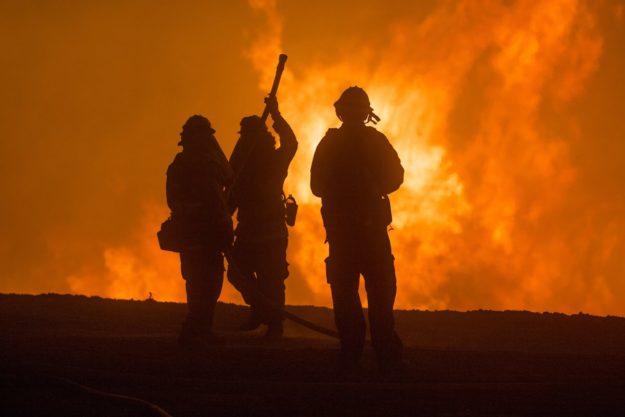Widgetized Section
Go to Admin » Appearance » Widgets » and move Gabfire Widget: Social into that MastheadOverlay zone
Forest Service shifting toward controlled burns, thinning trees to combat wildfires

The Biden administration will use $3 billion from last year’s infrastructure law to revamp the federal approach to wildfire management, introducing a 10-year plan to deal with the large swaths of the West scientists consider most at risk of destructive blazes.
Agriculture Secretary Tom Vilsack, a former Iowa governor, announced the new strategy in Phoenix, alongside Forest Service Chief Randy Moore and Democratic U.S. Sen. Mark Kelly.
The Forest Service will focus on using managed fires to reduce natural fuels — flammable material that can feed fires, including trees, grasses, dead leaves and fallen branches, according to a report the U.S. Forest Service released ahead of the announcement.
In prepared remarks, Vilsack highlighted the infrastructure law’s funding to address wildfires.
“It’s fair to say the Forest Service has recognized for some time, the need to dramatically — and I emphasize the word dramatically — increase our ability to treat at a pace and scale that will actually make a difference,” he said.
The law will add $650 million to a roughly $280 million budget to treat forests for fire prevention, a 350% increase.
The Agriculture Department and Forest Service had worked “for many, many years in the traditional budgeting process” to get the scope of funding that experts believed was necessary to reduce the risk of catastrophic wildfires, but did not have the resources until the infrastructure law, Vilsack said.
Kelly said wildfires had reached “a crisis point” that would only worsen with continued climate change.
“We can’t keep doing the same thing under worse conditions and expecting better results,” he said. “We need to be more proactive.”
In more than a century of management focused on fire suppression, forests have grown denser and fuels have built up, putting forests at greater risk of intense fires.
Carbon buildup in the atmosphere has also made matters worse by acting as natural heat traps. Climate change has reduced snow and rainfall in the West and produced hotter, drier weather, which has increased forest flammability, the report says.
The report calls for a “paradigm shift” in preventing fires, shifting away from fire suppression and toward a combination of logging to reduce forest density and prescribed, controlled burns.
“We need to thin western forests and return low-intensity fire to western landscapes in the form of both prescribed and natural fire, working to ensure that forest lands and communities are resilient in the face of the wildland fire that fire-adapted landscapes need,” the report said.
Under the plan, the Forest Service could treat an additional 20 million acres of national forest area, plus 30 million acres of other federal, state and tribal lands over the next 10 years, according to the report.
The first two years of the plan will focus on key “firesheds,” areas of 250,000 acres at risk of large-scale fires.
The scope of the effort — and the funding behind it — position it for success, said Susan Jane Brown, the Wildlands Program director at the environmental nonprofit Western Environmental Law Center.
Thinning forests, reducing fuels and using prescribed burns are established techniques, but the funding for forest management and the landscape-scale approach could make a larger impact, said Brown.
“The sort of scattershot approach, what we call random acts of restoration, simply aren’t working,” Brown said.
“We’ve known for a long time that part of the reason why the agency or service can’t get ahead of the problem is because they didn’t have the funding or the personnel to do the work,” she said. “And now they have the funding and Congress has told them to go hire the personnel.”
Planned projects to address risks in several Western firesheds — including in Arizona, Colorado and Oregon — are ready for work to begin and need only funding, according to the report.
Editor’s note: This story first appeared on Colorado Newsline, which is part of States Newsroom, a network of news bureaus supported by grants and a coalition of donors as a 501c(3) public charity. Colorado Newsline maintains editorial independence. Contact Editor Quentin Young for questions: info@coloradonewsline.com. Follow Colorado Newsline on Facebook and Twitter.


